Nayakan (1987)
Velu Meets Neela at Brothel
After the song , Naan Sirithaal Deepavali, Velu enters the prostituting room and hears a voice asking, "Can you let me go early, please?" He sees Neela through a mirror, unaware of who she is. The mirror is used here as a fake projection tool of her true identity. He asks "Why? So, you can earn more money?" She responds, "No. I have a maths exam tomorrow." which shocks Velu. As she says this, the camera tilts down from the mirror and pans right along with Velu, revealing her face for the first time. Parallelly, we hear Ilaiyaraaja’s gentle guitar wafting in the background, underscoring Neela’s tenderness.
They look at each other, a cloth screen separates them, symbolizing the emotional and physical distance between them. Velu crosses it to see her face with guilt. The camera frames him through bars, showing his internal shame. Now the cloth screen is removed from the perspective of Velu.
Velu then tries to leave the room immediately out of guilt, but Neela insists he stay, adding, "If you leave, someone else will come." Velu, out of all compassion, stays, and the screen between them is removed once again, but now from the perspective of Neela, signifying a shift in their understanding of each other.
She studies all night and eventually dawn breaks, violins (representing Velu) join the same guitar theme, symbolizing the beginning of a connection between Velu and Neela. The blending of the music mirrors the silent dialogue between them, as they start to understand each other’s true nature. In the final shot of the scene, Velu leaves the door half opened, symbolizing hope and the possibility that Neela can find another path beyond her current life.
Death of Neela
After years of marriage and children, one night, Velu and Neela discuss their children’s future in their bedroom. The mood is soft, with them discussing about their children's future. The room is gently lit with soft yellow lights, adding warmth to the scene, and a mosquito net hangs around their bed, adding a layer in front of the camera, diffusing the light even further, giving everything a dreamy feel.
But then, everything is about to get as chaotic as it could get in a little while. A distant voice, an old woman, calls out, "Please come out, Nayakkar sir." Velu, ever the protector, says he’ll go check, but before he can act, Neela rushes out ahead of him.
What she finds, is a deadly trap, men with guns waiting in the shadows. Within moments, before they even have a chance to react, Neela is shot multiple times (6 times iirc). Each bullet strikes her with brutal precision, and the impact is captured in a breathtaking slow motion mid-shot. As Neela stumbles forward, she slips from Velu's arms and fall out of the bedroom window. The music shifts to a haunting, morbid theme, which underscores the loss of the most personal one. I know it’s a heart wrenching scene but I can’t help it, this is one of my favourite shots in the film. Forget the pain for a second and just focus on the high-speed shot that captures the bullets tearing through her. Every reflex, blood splash, flinch, it’s so raw, so visceral, yet there’s something almost poetic in how it’s choreographed. The brutality of the moment is elevated into a strange kind of beauty. Just Mani Ratnam eyes!
Death of Surya
Surya, Velu’s son, has died after a failed execution of Velu’s errand. The scene unfolds with a quiet, crushing tension as Velu begins to piece together the truth. His entire household is already aware of the loss, but Velu is left in a fog of confusion, unaware of what’s happening around him.
The atmosphere is thick with a howling wind, leaves swirl, curtains billow, and pigeons scatter, all the while, Velu remains motionless, almost ghostly, as if he’s already dead inside. The camera slowly tracks his every movement, following his disoriented heavy steps, until it finally leads him to the tragic revelation of his son, Surya, lying lifeless in the same spot where his wife Neela had been shot years back. The history of loss and pain hits Velu all at once, every emotion flooding him in a single, devastating moment.
Ilaiyaraaja’s haunting morbid theme plays again in the background, underscoring the loss of another personal one. Pure heartbreak scene, no one can give us a performance to this level other than the great Kamal Haasan.
Bombay (1995)
Opening Scene
It's early morning, with a blue tone and light rain. The shot opens with a rail track bridge, followed by a boatsman rowing, and a shot of the beautiful trees. Seamlessly, the camera pans right and zooms out to reveal our hero, Shekhar, walking on the track toward the camera. As he walks along the shore of the lake, he notices a group of Muslim women getting out of a boat. They are all wearing traditional abayas (that black dress). Shekhar glances at one of the women for the first time. She notices his gaze, drops her books, and her face mask is blown away by the wind. In the same shot we a skipper tie his boat to a dock, symbolizing she has been hooked by Shekhar at first sight itself. What a fitting way to show love at first sight, visually.
Pregnancy Reveal
In this scene, Shaila Banu tries to tell Shekhar that she is pregnant, but Shekhar is busy with work and asks her to leave. Banu is compared to a pressure cooker, holding a special piece of news in her tummy that she wants to release as soon as possible. She moves closer and sits next to him, but when Shekhar shifts slightly, it only adds to her pressure. Finally, when the pressure peaks, the pressure cooker in the kitchen starts whistling, unable to hold it any longer, just like Banu. She rushes to the kitchen, stands next to the whistling cooker, and begins to pour out everything on her mind, except the pregnancy. The visual is striking, with both the pressure cooker and Shaila Banu releasing their built-up pressure in parallel. How beautifully simple and original a pregnancy reveal scene, one we’ve seen countless variations of in Indian cinema, could get?
Iruvar (1997)
Opening Scene
Setup in a train, the opening monochrome 4:3 shot, we see a kid gazing through the train’s window and a woman (probably his mother) sitting beside him. It mostly looks like natural lighting to me, probably with some reflectors, and the woman is kept in the dark as she’s not the focus, it’s all about the kid. As the train moves, the outside environment rushes toward him, which usually symbolizes hope. You can spot that little smile on his face, which adds to his happiness. The composition is in such that the window grills are converging into his eyes, acting as a leading line, which guides the audience’s focus directly to him.
A Shot from Aayirathil Naan Oruvan Song
In this song, when the line comes, "Ini ezhu nyaayiru ezhuga, andha irul kuutangal ozhiga," Anandan stands atop a mountain and kneels down in parallel as the sun rises behind him. This shot beautifully symbolizes that at the time of Tamil Selvan’s (sun) rise, Anandan’s downfall will take place. One more thing, the sun also represents their party’s emblem. Simple yet beautiful metaphor.
Another striking detail about this shot is how Anandan and the sun appear nearly identical in size. To achieve this effect, a high zoom lens must have been used, likely around 900 to 1000mm if I’m not wrong. Just imagine how far the camera would have been placed to frame them in such a way. The lack of optical image stabilization in those times led to some natural shakiness, which conversely made me love the shot even more. The slight instability gave it a vintage feel to the moment that makes it stand out even more, personally for me.
Accidental Gun Shot
During a song shoot, Anandan is shot by accident in the neck, immediately the camera shifts to his point of view (POV). Everything becomes a blur of pulsating dark and light, mimicking his heartbeat and amplifying the sense of uncertainty about his fate. This chaotic visual style conveys the tension between life and death, as the fluctuating contrasts of light and shadow suggest the fragility of his life in that moment.
Death of the Party Leader
In this scene, both Tamil Selvan and Anandan give commemoration speeches for the death of their party leader, Ayya Veluthambi. Tamil Selvan starts with a brief Tamil poem and finishes within a minute. Then, Anandan gives his speech, which is more than a simple commemoration speech. It raises questions, doubts, who’s next, what’s next, and so on. As Anandan speaks, the crowd becomes hyped, stirred by his words. Tamil Selvan, standing aside, looks at him with envy, but at the same time, he maintains a fake sadness for the sake of stage decorum.
All the dialogues are muted due to censor issues, but who cares about dialogues when we have a visual treat? The tension and fire of Anandan's speech are transferred directly to the audience through a 360-degree single shot. The camera keeps revolving around everyone on the stage. You may ask, what’s so special about a 360, degree shot? It can be easily achieved with a circular track. No, it’s not just a revolving shot, if you notice carefully, there are small pans here and there, and multiple focus shifts between each character on stage. Sometimes, the frame is mostly occupied with the reactions of the public standing below and much more.
This is a brilliant way to make us feel as though we are standing on the stage, one among them, experiencing the heat of the moment. The visual storytelling pulls us right into the centre of the action, making us feel part of the tension and the atmosphere.
Minister Post Denial Scene
In this scene, we have an indirect conversation between Tamil Selvan and Anandan. Anandan, a high-profile actor, meets Tamil Selvan, the Chief Minister of Tamil Nadu, requesting a ministerial post. Though they are thick friends, Tamil Selvan doesn’t like Anandan’s quick fame among the public, so he denies the request without directly telling him. This is a very diplomatic scene. The tension becomes palpable when Tamil Selvan lies, claiming that “seyal kulu” won’t accept this.
The scene starts with a pan down shot from the side of Tamil Selvan, indicating his moral decline, as he is lying. The lighting in this scene is also quite telling. Anandan is bathed in bright light, symbolizing his character, while Tamil Selvan is hidden in shadows, suggesting his dark intentions. These are just a trailer to what’s about to come!
Let’s see how masterminds use nothing but a simple lens to showcase the complex power dynamics at play in this scene. This is a conversation scene right, so there are of course OTS shots, but the lensing and staging are what make this scene very brilliant. I’m going to get a little deep into this 45 second scene.
Basic characteristic of a zoom lens: As you zoom, compression occurs, meaning the distance between the background and the subject in focus is reduced, and the subject becomes larger in the frame.
Back to the scene. After the tilt down shot which, I just mentioned above, we cut to the OTS of Anandan, where the camera is placed far away from him and zooms in continuously, making Tamil Selvan appear larger and more dominant in the frame, while Anandan remains smaller and becomes more and more out of focus. This emphasizes Tamil Selvan’s control over the situation.
Basic characteristics of a wide lens: The subject nearer to the lens appears larger, while the subject farther from the lens appears smaller. There are, of course, lens distortion effects around the edges, but we'll leave that for now.
Back to the scene. Now, cut to the OTS of Tamil Selvan. The lens is completely zoomed out (wide), with the camera placed very close to Tamil Selvan, still maintaining his larger appearance in the frame, while Anandan is pictured smaller, again subtly underscoring Tamil Selvan’s control over the situation.
We are only half-way down. Now come to the rolling chair, Tamil Selvan is sitting on a rolling chair and constantly rotating it clockwise and anti-clockwise in such a way that he attempts to cover Anandan’s face from the frame every time. But he also fails every time, symbolizing Tamil Selvan’s inability to over-shadow Anandan’s star power among public.
Finally, the scene breaks the OTS and ends with a tight close up of Anandan’s evil smile, capturing the end of their relationship, showing how jealousy have strained their bonding.
Now, I want you to take a moment to understand and appreciate the genius of this scene. He could have simply shot the scene with a single focal length, constant aperture, and an overall even spill lighting since it’s just a 45 second scene. The general audience might not even notice the nuances, but he didn’t. And man, the rolling chair, how did they even think of it? A rolling chair used to cover one’s face, which perfectly syncs with the dialogues acting as a subtext and also harmonising the main context. Oh, my Mani Ratnam! This was one of my peak fanboy moments, I literally shouted at this scene, when watching for the first time.
Alai Paayuthey (2000)
The Under-Construction House
Location is not just a backdrop but an integral storytelling tool. Mani Ratnam never simply place characters in a random setting, he chooses locations that adds to the narrative. A perfect example of this is the house Karthik and Shakthi live in after they are thrown out of their respective homes. The house is still under construction, incomplete.
Mani Ratnam could have easily chosen any ordinary house, but he deliberately chose one in a state of disrepair to reflect the couple's own lack of preparedness for the life they’ve chosen together. Every quarrel, every moment of conflict between them is framed against the backdrop of this half-built house, which underscores their emotional immaturity and uncertainty. This visual metaphor may not be consciously recognized by the general audience, but it surely does at a subconscious level.
Kannathil Muthamittal (2001)
Revealing Amudha that She is Adopted
This is a scene where Amudha, a 9-year-old girl, is told by her father that she is not their biological child, but an adopted one. The scene captures her emotional response to this revelation. Let’s see how Mani Ratnam visually conveys her thought process and state of mind as simple as possible yet touching. The setting is a not very sunny morning at beach. The father and daughter are positioned in a geometric circle: the father at the centre, and Amudha playfully running around the boundary. The scene begins with the father saying, “Can I tell you a truth, Amudha?” - shown in a fixed mid-shot. Amudha responds, “No, Dad, please don’t tell me long stories. I’m bored of those,” as the camera rotates around her, tracking her movements. The father continues, “No, this isn’t a story. It’s about you.” Amudha, dismissive, replies, “Okay, I get it. I’m nine now, so I have to be more disciplined and study harder, bla bla, am I right?”
The truth is slowly unfolded to her as the scene progresses, with the camera constantly rotating around Amudha in a 360-degree shot, symbolizing the confusion and whirlwind of emotions in her mind. In contrast, whenever the shot cuts to her father, the camera is still (his stability of mind), as he is aware of this information for years. As the scene reaches its emotional peak, the framerate slows down, heightening the sense of tension. Overwhelmed by the truth, Amudha finally moves out of her comfortable circle, running away from her father in tears. When her emotions reach a breaking point, she collapses onto the sand, consumed by the weight of the revelation.
Amudha Leaves the Home
After discovering she’s adopted, Amudha runs away from home, desperately searching for her biological parents. At the railway station, she is caught by a police officer, who contacts Amudha’s mother to inform her of Amudha’s location. In this scene, both Amudha’s father and mother arrive to bring her back home. Throughout the film, Amudha shares a deep bond with her father, but her relationship with her mother is a little distant, despite her mother’s immense love for her.
The staging is designed as a line with three points. On one end stands Amudha, and on the other end, her mother. Amudha’s mother, overcome with emotion, runs to the platform where Amudha is standing. She gazes at her daughter, her stare full of unspoken questions and unexpressed reprimands, a look that questions Amudha’s actions and scolds her for running away, without uttering a single word.
Amudha, fearful of her mother’s gaze, does not move toward her. The camera frames her mother with a beautiful telephoto shot, possibly around 120mm with soft bokeh. Then, the father enters the frame exactly at the midpoint of the line, acting as the bridge between the two. The telephoto lens smoothly shifts focus from the mother to the father, subtly highlighting his role in connecting Amudha with her mother. This staging and the focus shift are a clinical genius, it visually conveys both the unspoken dynamic and the emotional bonding between all three of them, without even a single word. That is Mani Ratnam!
Amma
At the end of the film, Amudha's family finally finds her biological mother. In this emotional scene, Amudha, filled with love and longing, presents her mother with her personal things like photo album, school incidents, and prices. We are almost brought to the brink of tears. After a brief conversation, Amudha’s biological mother, Shyama, prepares to leave without saying much. As she begins to walk away, Amudha desperately calls out, “Amma, please don’t go. Stay with us, please.” The word "Amma" makes Shyama to break down in sorrow, and the emotional weight of the moment overwhelms everyone, including the audience.
Coming to staging, Shyama is positioned at the centre of a finite line, with Amudha’s family on one side and her brother waiting for her on the other. She glances at her brother, then hears Amudha call her “Amma” again. In tears, Shyama turns back to Amudha, pleading for her not to say that word. But when she looks back at her brother, the pull of her past and present becomes too much to bear. She runs back to Amudha, unable to hold back her emotions, kisses her on her cheeks, apting the title of the film “Kannathil Muthamittal.”
Raavanan (2010)
Opening Scene
The opening scene jumps straight into action with a fast-paced montage of shots. We start with the protagonist, Veera, standing calmly on a mountain cliff, looking down at the river. Cut. We see a blockade being set up, a woman flirting with two cops. Cut. A motorcycle heading towards a slick oil-covered road. And few more cuts, Veera gently nudges a pebble into the river, and then we see him dive into the river perfectly, just like his plans getting executed perfectly. As drums build in the background, chaos erupts: cops are shot, set on fire, and their vehicles are engulfed in flames. In the middle of all this, Veera swims out of the river, calm and composed. Seriously? who wants to take their audience into their film like this? no establishment shot, nothing, straight into the chaos of montage.
Sita Getting Kidnapped by Raavana
This film draws heavy inspiration from the Hindu epic Raamayana, and we’ll see many parallels throughout. Some of these I’ll point out here. When we first see Rahini, the camera swoops down toward her from an eagle’s-eye view, mirroring Jatayu’s perspective. Ahead of her, a large boat barrels straight toward her small boat. She notices a silhouette of a man standing in front of her on the larger boat. In the Raamayana, Ravana kidnaps Sita and takes her away in the Pushpaka Vimana, flying through the sky. Here, the abduction takes place on water, but the visual parallel is still strong. We cut to an underwater shot set against the sky, showing both boats colliding, doesn’t it resemble two bird’s beaks locking in battle in sky?
As they collide, the smaller boat is broken down by the larger one just like how Raavana chops the wings of Jatayu in Raamayana.
Sita – The Child of Mother Earth
After Raghini being kidnapped we see a shot where she is lying curled in a foetal position in a circular well-like rock formation that resembles a nest. Thinking about why this specific shot, we find that it looks like a child’s resting position in a mother’s womb. What a fitting way to show Sita - The child of mother earth. Just Mani Ratnam sprinkling parallels to Raamayana all over the film.
Agni Pariksha
In this scene, after Dev rescuing Raghini from Veera go back to their home by train. Dev now plays dirty by using Raghini as a bait to catch Veera, asks Raghini if she will be willing to undergo a lie detector test to prove her sexual purity or the equal of Agni Pariksha in Raamayana. This scene has got some interesting staging. Whenever Dev asks Raghini this wild question on her purity, the train enters the darkness of a tunnel.
And each time, she answers we are out of the tunnel, back in full daylight. The darkness of the tunnel shows his mindset and the light to show hers. Just Mani Ratnam things.
Oh Kaadhal Kanmani (2015)
Bhavani Aunty’s Approval
Aadhi brings Tara to Ganapathy uncle’s house and introduces her to both him and Bhavani aunty. He mentions that they are in a live-in relationship and asks for permission to stay together in his room. Uncle, clearly uncomfortable, firmly declines, showing no interest in supporting the relationship. Aadhi steps outside with him, hoping a private conversation will change his mind, while Tara and Bhavani aunty remain inside. The staging is such that all four characters are visible in single frame.
Two conversations unfold in parallel. Outside, Aadhi tries his best to persuade Ganapathy uncle, while inside, Bhavani aunty tunes a Tanpura and gently asks Tara if she sings. As Aadhi continues to plead with uncle, a soft, soulful voice emerges from the room. Tara begins singing the beautiful Carnatic song “Malargal Keten” with Bhavani aunty accompanying her on the Tanpura. The music fills the space, and the scene is bathed in warm, golden key and backlighting, creating an atmosphere reminiscent of "Idhu oru Pon Maalai Pozhudhu" (an Ilaiyaraaja song from “Nizhalgal”)
Outside, Aadhi, once in focus, slowly fades into the background, symbolizing that the conversation has shifted. His efforts to convince uncle now seem secondary. Bhavani aunty, deeply moved by Tara’s singing, becomes the deciding factor and the mission is accomplished. The lighting and the focus shift are the striking points here.
Temporary vs Permanent Relationship
Many viewers who watch this film on a surface level may think it’s simply about two couples in a live-in relationship. However, on a deeper level, it draws a powerful comparison between the temporary relationship of Aadhi and Tara, and the permanent bond between Ganapathy and Bhavani. Throughout the film, subtle parallels are drawn, which only become apparent when we look beyond the surface.
One example which I remember on top of my head is when Bhavani, an Alzheimer's patient, returns home after a medical check-up. The staging is such that Ganapathy and Bhavani are in their bedroom with the door slightly ajar. Aadhi and Tara, standing outside, watch Ganapathy care for Bhavani with quiet devotion, lifting her gently and laying her on the bed without a word of complaint. Aadhi and Tara observe all of this through the narrow gap in the door, symbolizing how their live-in relationship feels confined, in contrast to the deep, enduring connection between Ganapathy and Bhavani. This moment triggers a reflection for Aadhi and Tara about the nature of their own relationship.
Later, in the second last scene of the film, the door gap is framed again, but this time, Aadhi and Tara are the ones observed through it. The change in perspective signals their fully grown understanding of the importance of a permanent relationship.
Cut to the room inside, we see a classic Mani Ratnam mirror shot, where the reflection captures their newfound maturity and understanding of what true love is.
Aadhi and Tara Finally Opens-Up
In this scene, Bhavani aunty, suffering from Alzheimer's, goes to the temple but forgets the way back home. Aadhi and Tara, worried, take their car and drive through the streets, searching for her in the pouring rain. The car windows remain closed. As they search, they have an indirect conversation about their own lives and future, never addressing the topic directly. Both are hesitant to talk about their love, fearing that a marriage might ruin their careers and independence. The tension builds as they exchange words that hint at their deeper fears without saying them outright.
As the rain begins to ease, they open the car windows. Pit stop. Why does the rain stop now? Why was there rain in the first place? Chumma simply? Nope, nothing in a Mani Ratnam film is placed without reason.
At first, the closed windows reflect their confined, indirect conversation. Later when they open up to each other, they open the car windows, throwing their fears and egos out of the window. Isn’t this a beautiful metaphor? Yes, it’s a small detail, yet a detail which you can see only in a Mani Ratnam film.
Chekka Chivandha Vaanam (2018)
Senapathi-Lakshmi’s Sons Leaving the Town
The plot to kill Senapathi has failed, and now everyone is a suspect, those around his gang, those within it, even his own family. But no one knows who’s truly behind the attempt, except Senapathi himself. One night, he tells her wife that the assassin is one of their own children. Lakshmi is crushed by the revelation. She pleads with Senapathi not to tell her who it is, not wanting to face the unbearable truth of which child could have betrayed them.
The next morning, as their children prepare to leave, Lakshmi is consumed by the painful knowledge that one of them is responsible for the attack. But she still doesn’t know which one. Lakshmi doesn’t even come downstairs to send them off. She stands in her room, as a distant person, and waves at them through the glass window. The reflections of the trees outside distort on the glass surface, mirroring her own tangled confusion. Water trickles down the glass, echoing the silent tears falling from her eyes. The backdrop is dark, heavy with shadows, mirroring the darkness of her thoughts, torn by the agony of knowing the truth but unable to bear its full weight. The subtleness of the staging is contrastingly very telling. Again, just Mani Ratnam things.
Death of Senapathy
This scene is a brilliant example of how even inanimate objects can participate in storytelling. The scene is about the moment when Senapathi, unable to bear the pain of his son’s betrayal, dies. The reactions of everyone in the house unfold around this tragic event. The scene begins in the morning. Lakshmi wakes up and steps out of her bedroom, only to find Senapathi sitting motionless on the sofa - an object that has symbolized his power throughout the film. She tries to wake him, but he doesn't respond. In shock, she gently tries to move him, but his body just rests lifeless on the sofa.
Soon, Senapathi’s eldest son, Varadharajan enters and checks his father by laying him into his lap. Doesn’t his action of pulling his father from the sofa represent how he wanted to take his father’s position and power?
The tension builds as people start shouting - calling for an ambulance, crying, running around in panic. The camera slowly tilts downward, pulling back to an almost a kind of top-down shot that fills the frame with just the sofa. This frame is more than a frame, it tells the whole story of the film. It doesn’t stop there, notice the arrangement of pillows on the sofa. 2 brown pillows, representing Senapathy and Lakshmi. One of these two pillows is fallen, symbolizing Senapathi’s death and the 6 white pillows around them representing the three sons and their wives who must now face this loss.
This is far from complex. Just by using a sofa and 8 pillows he could capture the entire theme of the film within one frame: power, betrayal, and family. Infiniteth day of wondering how Mani Ratnam came up with this phenomenal staging and setting.
Concluding Note
What I’ve shared here with whatever little knowledge I have is just a tiny fraction of Mani Ratnam’s vast oeuvre. Every frame in his films is meticulously composed; nothing is random. He tells stories not just through dialogue, but through powerful visuals. I’m still amazed at how one man can consistently deliver something fresh and new every time. I've encountered many great artists and their work throughout my life, and will continue to do so. But Mani Ratnam will always be the one who first opened my eyes to the world of art. Just saying 'Thank you' doesn’t feel enough.
Contact
Instagram: @maestro.raaja

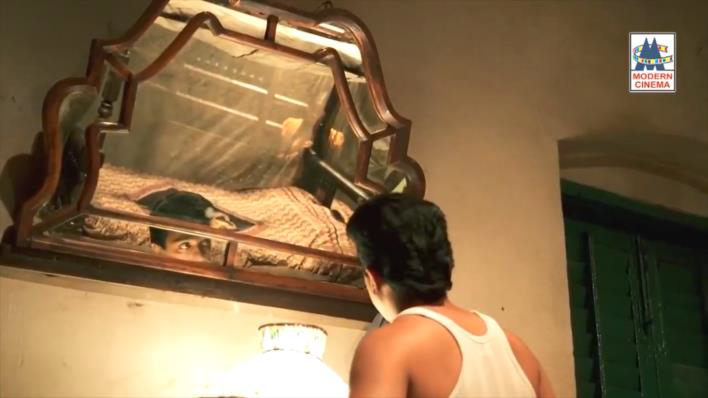


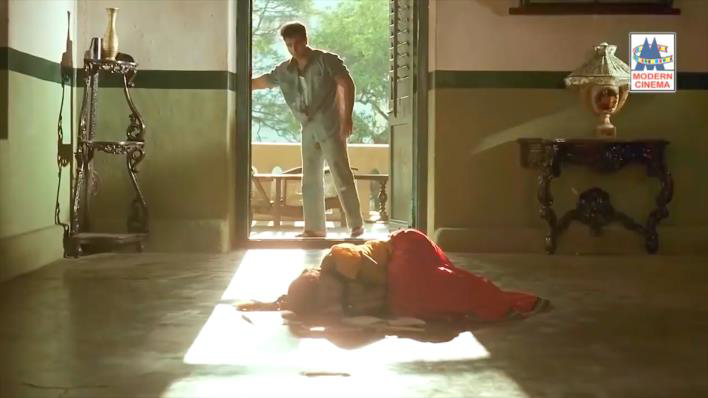
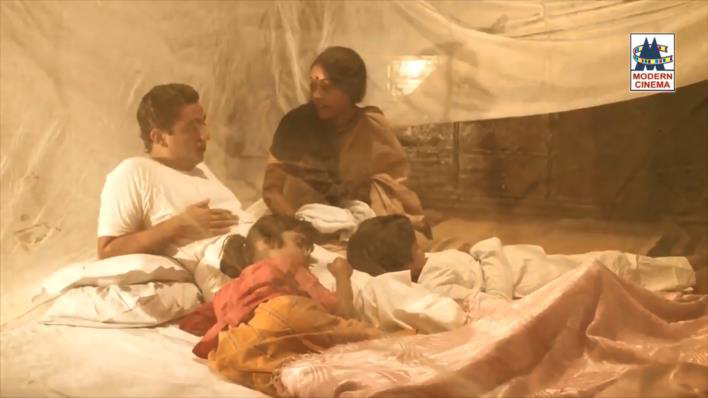



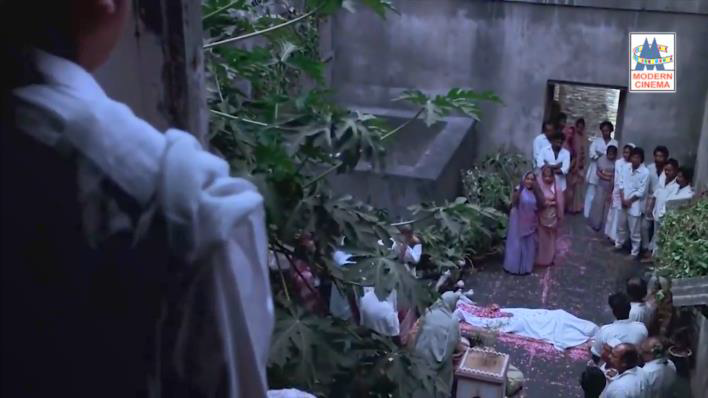










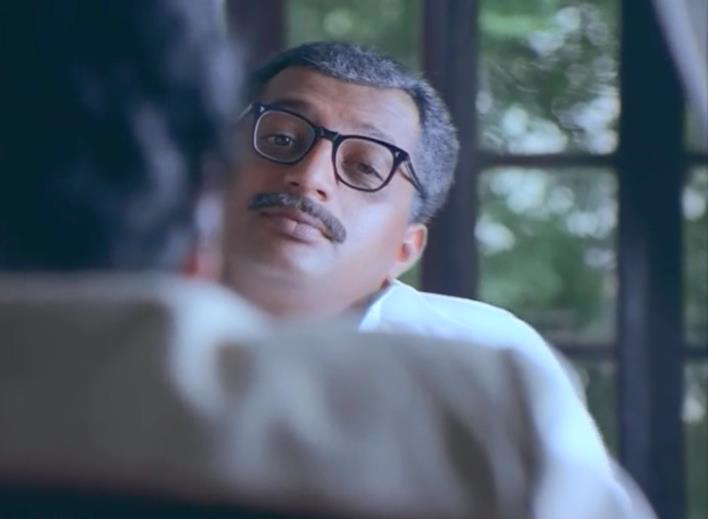




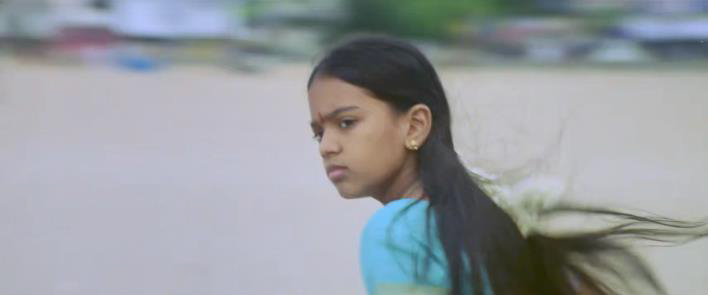









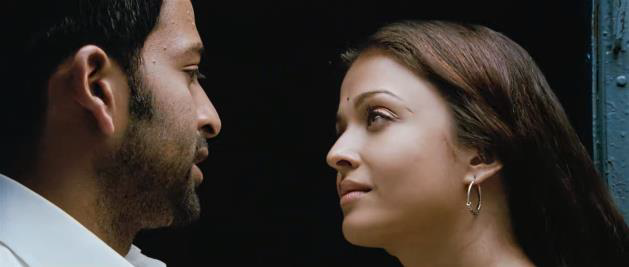



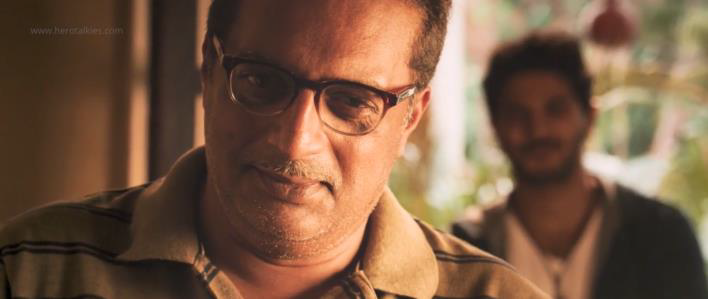



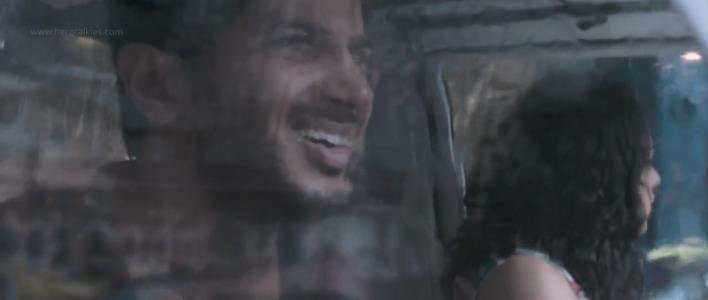





Comments
Post a Comment